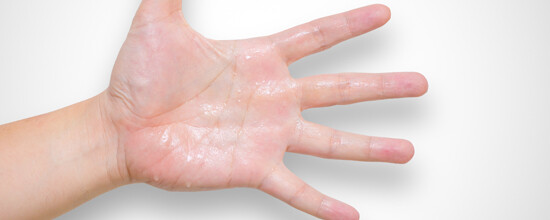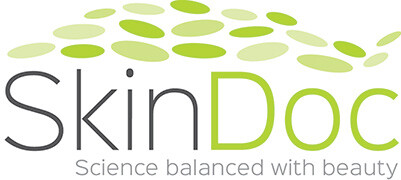Hyperhidrosis – Excessive Sweating
Excessive sweating in the armpits affects about 33% of people in Australia who describes the perspiration is ”barely tolerable” or “frequently interferes with activities”.
Excessive sweating can occur in the armpits, as well as the palms and sole which can be very embarrassing for many people to the extent they avoid certain activities or wear certain coloured clothing.

Treatments
Ionotophoresis is a method of passing an ionised substance into intact skin by the application of a direct electrical current. The mechanism of action has not been firmly established. Several theories postulated include the first theory where there is plugging of sweat glands with ion deposition. There is localised electrochemical coagulation of proteins that leads to disruption of eccrine sweat gland function. The second theory involves blocking of sympathetic nerve transmission by disrupting stimulus secretory function or a decrease in pH as a result of accumulation of hydrogen ions.
Ionotophoresis is safe and effective for mild to moderate hyperhidrosis of palms and soles. It can be done at home and is not painful but the electrical current may cause mild short-lived discomfort and skin irritation. Each session lasts 20-30 minutes and you will need two to four sessions per week. Your symptoms should begin to improve after a week or two after which further treatment will be required at one to four week intervals depending on how severe your symptoms are. Tap water ionotophoresis is generally tried first before considering adding baking soda or anticholinergic drug to the solution. Studies suggest that an anticholinergic drug appears to be more effective than tap water. Anti-cholinergic drug side effects can occur such as dry mouth or sore throat and last 12-48 hours but these side effects tend to be mild.
Oral anticholinergic medications can also be used to treat patients with generalised hyperhidrosis. Speak to us to discuss this option.
A solution approved by the TGA can be injected into the armpits in a series of microinjections and has been shown to effectively controlled the excessive sweating in this area. This treatment may be eligible for Medicare rebates. It helps reduce sweating by blocking the signals from the brain to the sweat glands. About 5-7 injections are given to each of the affected armpits and procedure takes about 30 minutes.
Potential side effects of the solution injections include:
Injection relatedpain, redness, itching, tenderness, bruising, swelling, infection, numbness, headaches and hot flushes after the injections are given
The most common side effect is localised burning or stinging pain at the site of injection in the armpit.
As a result, we have started reducing the number of injections from standard 15-20 to 5 or 7 point technique to each axilla. The 5 or 7 point technique has been shown in Australia to significantly reduce the pain score. The effectiveness of the latter technique has been shown to be as effective as the traditional method.
In the near future we will be assessing a new device on trial for excessive sweating in a small group of patients.
Alternative Treatment Options
Endoscopic thoracic sympathectomy
Endoscopic thoracic sympathectomy ETS is a surgical procedure that is used to treat hyperhidrosis. It is usually used to treat hyperhidrosis of the palms or armpits. Small incisions are made at the side of chest at the level of 4th and 5th rib and the sympathetic nerve is clamped with a titanium clip. This leads to significant reduction is axillary sweating with a low incidence of compensatory sweating. In a very small number of cases the compensatory hyperhidrosis is made worst than the original problem and in such situations the clips can be removed. In most cases the compensatory hyperhidrosis is alleviated but not in all cases.
Risks of ETS
Compensatory hyperhidrosis can occur below the level of the sympathectomy and is very common. Its course is unpredictable and can be permanent. In other cases it can lasts 6-12 months then improve. It tends to be worst in patients with pre-existing lower body sweating.
Other complications include bleeding into the chest during surgery, air becoming trapped inside the chest (pneumothorax) which can cause chest pain and breathing difficulties and Horner’s syndrome. In Horner’s syndrome there is drooping of the eyelid, a smaller pupil and some blurring of vision on the side the surgery is performed. It can be temporary or permanent and the risk is about 1%. The procedure is performed by vascular surgeons.
Facial hyperhidrosis
The anti-wrinkle solution can be used to localised areas on the forehead, nose and upper lip. The results tend to last 2-4 months. It is used in a more dilute form for facial hyperhidrosis than for management of wrinkles.
